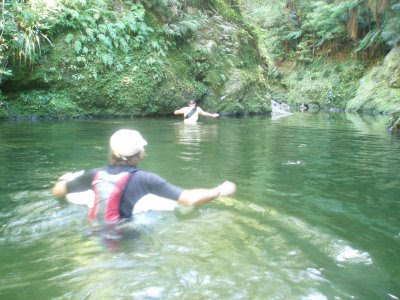Fast forward 15 years and they were still banging, six foot of me was sixty feet up a concave crumbly tussock slope. The slippery, featureless bare rock below which had been so easy to climb up, now seemed so easy to fall down. My girlfriend had dumped me, my foot felt like it was slipping (though there was no movement perceptible to the eye) and despite the vast landscape around me I was so far in my head that I didn't know Martin had passed me until he started issuing instructions from above.
Martin Rodd redefined my appreciation of "hard"ness. Every so often you meet someone who redefines or extrapolates on the qualities that makes one strong in the mountains. Before Martin I had met Kynan Bazley and later I met Kieran McKay, but they are different stories. This story is about Martin, and although he didn't have the calm demeanour or physical fluidity of the latter two he shared their manic glint and exhibited a gritted sense of determination and brute physical force. Previously Martin and I had shared a weekend in the Eyre mountains, escaping out of a storm to a derelict hut with only the vestiges of walls. We yarned quite a bit of the night as the squalls thrashed our shelter, mainly about Martins adventures and exploration of the West Coast, and woke in the morning to snow drifts in the corners of our bunks and my frozen shoes. Martin who had slept with his watched in disdain as I had to rip my shoes to get my feet in. It was a long walk out in his footsteps.
But here we were now on the side of Mt Wilmot, straddling Lake Manapouri and Doubtful Sound and Martin was above me and my fingers weren't gripping. The thing is, this was the objective. Martin had cornered me at work, "come and climb Mt Wilmot". Ok. The access was horrendously awesome. The Percy Pass MTB route. We parked at Borland Lodge and headed up over to the Grebe following the transmission lines. The Grebe is amazing watercourse, its headwaters leach out of New Zealand's biggest ever landslide. But it leachs out so clear, almost translucent and the beech forest is so picturesque, even when it gets stunted when you hang a left and head up the Percy Stream. We have so few places in New Zealand where transmission lines cross remote country and you can explore the old tracks by bike. My mind strains; Dennistoun incline to Lyall, spots around Arthurs Pass, out the back of Tokaanu. But this is the best. The track up to Percy Saddle isn't rideable by mortals and further reduces to a carry when the road ends in beech forest. You heave the bike on the shoulder and make for the distant pylon on the saddle.
When we reached the saddle though it was snowed in. Bikes in an alpine paradise. A crusty alpine paradise. I remember staggering down the hill dragging or pushing the bike in a constant state of fall. Once the snow clears though the downhill is diabolical,amazing. Its how you envisage a mountain road in Kazakhstan. TV sized rocks strewn over the tracks where you roar around blind corners. And the arm of Lake Manapouri is so far down there, deep blue under the mountains.
Martin looking forward to Lake Manapouri and casting a look over the shoulder at the climb to Percy Saddle
It had been a long day, but this one was meant to be longer, another 1000metres up the slope I am currently stuck on, a quick return to the bikes and a cycle down Wilmot Pass which had amused us for an hour this morning, hopefully to catch the ferry, then 50km on the bikes back to Borland lodge. No wonder my legs were shaking. I edge to the right closer to safety and my foot slips, the other digits hold. My head is gone. I grasp at the ledge and pull myself over, you can see the disappointment in Martins eyes. This ain't a man who lets his goals go easily. He gives me time out while he does a reccie. I eat food and wuss out. By the time he returns I have completely failed to regather myself.
I quit, like I did when I was four foot tall and descended desperately back down the hill. It was further home this time. We still had the bike down, the ferry and the bike back around. Plenty of time for suffering and self analysis. What doesn't kill you makes you stronger they say, but I often wonder what is that little edge inside some people that makes them so strong, so determined to achieve and endure more than I can comprehend or begin to undertake. Just genes maybe? I'm not sure
(for some more info about the trip check out this site.)






































